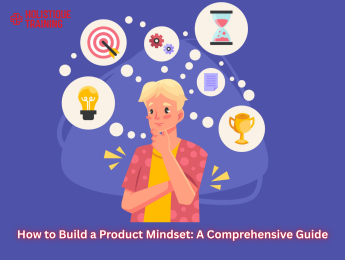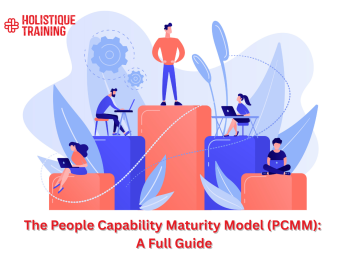- Table of Contents
- Introduction
- Differences Between Short-Term and Long-Term Goals
- A. Short-Term Goals:
- B. Long-Term Goals:
- Similarities: Long-Term and Short-Term Goals
- A. Alignment
- B. Planning
- C. Progress Tracking
- Why Do You Need Both Short- and Long-Term Goals?
- a. Motivation
- b. Direction
- c. Focus
- d. Flexibility
- How to Set and Keep Your Goals
- a. Define Your Vision
- b. Break It Down
- c. Make Them SMART
- d. Write Them Down
- e. Seek Accountability
- f. Review and Adjust
- Examples of Long-Term Goals
- Examples of Short-Term Goals
- Overcoming Obstacles in Goal Pursuit
- Procrastination
- Unexpected Life Events
- Lack of Motivation
- Fear of Failure
- Lack of Support
- Burnout
- The Role of Cultivating a Growth Mindset
- Understanding a Growth Mindset
- Cultivating a Growth Mindset
- Conclusion
Introduction
Setting goals is an essential aspect of personal and professional development. It provides a roadmap for growth and success, enabling individuals to channel their efforts towards a desired outcome. Regarding goal-setting, two common categories emerge: short-term goals and long-term goals. While these goals differ in their timeframes and scope, they both play a crucial role in shaping our lives. This blog post will explore the differences and similarities between short-term and long-term goals, highlight the importance of balancing them, discuss effective goal-setting strategies, and provide examples of both short-term and long-term goals.
Differences Between Short-Term and Long-Term Goals
A. Short-Term Goals:
Short-term goals act as the building blocks of our larger aspirations. They are akin to the fuel that ignites the engine of progress. These goals are designed to be achieved within a relatively brief timeframe, spanning from a few weeks to a few months. Their immediate nature provides a sense of urgency and focus, compelling individuals to take swift, decisive actions.
One of the defining characteristics of short-term goals is their specificity. They are often tightly defined and measurable, leaving no room for ambiguity. For instance, a short-term goal could be completing a specific project at work within the next two weeks or mastering a particular software programme within a month. The specificity of these goals allows individuals to channel their efforts with precision, ensuring that every action taken contributes directly to the goal's accomplishment.
Furthermore, short-term goals often provide immediate feedback. As they are achieved swiftly, individuals can readily assess their progress. This rapid feedback loop is invaluable as it provides a tangible sense of accomplishment, boosting motivation and confidence. It reinforces the belief that with determination and focused effort, goals can indeed be achieved.
B. Long-Term Goals:
In stark contrast, long-term goals encompass a grander vision that extends over a significantly longer period, often spanning years or even decades. These goals are characterised by their depth and complexity, requiring substantial dedication, resilience, and sustained effort. Long-term goals embody one's dreams and aspirations, representing the epitome of what an individual envisions for their life or career.
Due to their extended timeframe, long-term goals demand meticulous planning and a steadfast commitment to seeing the journey through. Unlike short-term goals, the outcomes of long-term goals are not immediately visible, making them akin to a distant lighthouse guiding ships through a vast ocean. This element of uncertainty and delayed gratification necessitates a different kind of motivation—one rooted in patience and a profound belief in one's abilities.
Long-term goals often necessitate significant personal growth and development. Achieving them requires individuals to evolve, both professionally and personally, developing new skills, acquiring knowledge, and honing their strengths. For instance, someone aspiring to become a recognised expert in their field might need to pursue advanced education, gain practical experience, and establish a robust professional network over several years.
In addition to their transformative nature, long-term goals often involve considerable risk. Ventures such as starting a business or pursuing a high-stakes entrepreneurial endeavour require a leap of faith, strategic planning, and navigating through challenges and uncertainties. Unlike short-term goals, the path to achieving long-term aspirations is rarely linear; it demands adaptability and resilience in the face of setbacks and unexpected turns.
Despite their differences, both short-term and long-term goals are vital components of a fulfilling life journey. Short-term goals provide the immediate motivation and momentum necessary to keep moving forward. In contrast, long-term goals offer a sense of purpose and direction, guiding individuals toward a future they aspire to create. Striking a balance between these goals is the key to holistic personal and professional development.
Criteria | Short-Term Goals | Long-Term Goals |
Duration | Weeks to Months | Years to Decades |
Focus | Immediate Achievements | Significant Life Milestones |
Scope | Specific and Tangible | Visionary and Ambitious |
Examples | Completing a project, Learning a new skill, Saving money | Starting a business, Earning a degree, Achieving financial independence |
Table 1: Short-term and long-term goals comparison
Similarities: Long-Term and Short-Term Goals
According to ClickUp, you need both in your life to achieve anything. Although short-term and long-term goals differ in their timeframes, they share commonalities that make them complementary:
A. Alignment
Goals must resonate with an individual’s core values, passions, and overarching life purpose, whether short-term or long-term. Alignment is the fundamental essence that ensures every goal set contributes meaningfully to one's life journey. When short-term and long-term goals align with an individual’s innermost desires, they cease to be mere tasks; they become stepping stones on a path toward personal fulfilment and satisfaction.
When aligned, goals provide a profound sense of purpose. They are not just checkboxes on a to-do list but meaningful endeavours that bring joy and fulfilment. For instance, if an individual values environmental conservation, both their short-term and long-term goals could revolve around sustainable practices, be it implementing eco-friendly policies at work in the short term or establishing a green nonprofit organisation in the long term. The alignment of goals with personal values creates a powerful synergy, infusing every action with a deeper sense of meaning.
B. Planning
Both short-term and long-term goals require meticulous planning and strategic thinking. Planning is the cornerstone upon which successful goals are built. For long-term goals, this involves breaking down the monumental task into manageable steps and creating a roadmap that outlines the journey ahead. Each short-term goal becomes a strategic checkpoint, ensuring progress is on track.
Planning also involves resource allocation. Whether it’s time, money, or energy, individuals must allocate their resources wisely to achieve both short-term and long-term goals. For example, someone aspiring to start their own business might set short-term goals to attend entrepreneurship workshops, save a certain amount of money, and build a professional network. These short-term actions are intricately woven into the broader plan of establishing and growing a successful business over the long term.
C. Progress Tracking
Regularly monitoring progress is essential for both short-term and long-term goals. Tracking progress serves multiple purposes. First, it provides a tangible measure of success, reinforcing the sense of accomplishment and boosting motivation. Second, it acts as a diagnostic tool, allowing individuals to identify challenges and areas that need improvement. Lastly, progress tracking provides valuable feedback, enabling individuals to adjust their strategies and ensure they stay aligned with their goals.
Progress tracking involves celebrating milestones, both big and small. When short-term goals are achieved, they serve as stepping stones, motivating to tackle the next challenge. Likewise, in pursuing long-term goals, every milestone achieved signifies significant progress toward the ultimate objective. Acknowledging these achievements fosters a sense of pride and provides the necessary momentum to continue the journey.
In essence, alignment, planning, and progress tracking form the shared foundations of both short-term and long-term goals. These elements are vital for achieving individual goals and fostering a holistic approach to personal and professional growth. They create a framework within which goals are not just dreams but tangible, achievable realities, shaping lives profoundly and meaningfully.
Why Do You Need Both Short- and Long-Term Goals?
Integrating both short-term and long-term goals into your life is vital for several reasons:
a. Motivation
Short-term goals provide quick wins and immediate gratification, boosting motivation and momentum. They create a sense of accomplishment that acts as a motivational springboard, propelling individuals toward their long-term aspirations. Achieving short-term goals fuels the belief that progress is possible, enhancing confidence and inspiring individuals to tackle even more significant challenges.
b. Direction
Long-term goals serve as guiding beacons, providing a clear direction and purpose. They act as a compelling vision of the future, shaping decisions and actions in the present. Long-term goals offer a profound sense of meaning, grounding everyday activities in the context of larger life ambitions. They provide individuals with a roadmap, enabling them to make choices that align with their ultimate objectives, ensuring a fulfilling and purpose-driven journey.
c. Focus
While long-term goals may seem daunting, short-term goals break them down into manageable tasks, allowing individuals to maintain focus on specific actions and objectives. Short-term goals act as immediate priorities, channelling attention and energy toward incremental progress. They prevent individuals from feeling overwhelmed by the magnitude of long-term objectives, providing a sense of clarity and direction in day-to-day activities.
d. Flexibility
The combination of short-term and long-term goals offers flexibility in adjusting your plans. Short-term goals allow you to adapt and respond to changing circumstances while keeping your long-term aspirations intact. This flexibility is invaluable in the face of unforeseen challenges or opportunities. Short-term goals can be adjusted or replaced without compromising the overarching vision, ensuring individuals can navigate changing landscapes with resilience and adaptability.
Integrating both short-term and long-term goals thus creates a dynamic synergy, balancing immediate needs with long-term vision. This balance propels individuals toward continuous progress and equips them with the resilience to withstand challenges, adapt to change, and emerge stronger on the other side. It instilled a sense of purpose, direction, and focus, transforming aspirations into attainable realities and shaping lives in impactful and enduring ways.
How to Set and Keep Your Goals
Setting and keeping goals requires a systematic approach. Here are some strategies to help you effectively set and maintain your goals and not be one of the 92% of people who set goals yet don’t seem to reach them:
a. Define Your Vision
Defining your vision is akin to setting the North Star that guides your journey. Take the time to introspect and understand what truly matters to you. Your long-term goals should align seamlessly with this vision, reflecting your deepest passions and aspirations. This clarity becomes the foundation upon which you build your goals. When your goals are rooted in a well-defined vision, they become more than tasks; they become meaningful pursuits that resonate with your soul, propelling you forward with purpose.
b. Break It Down
Breaking down daunting long-term goals into smaller, achievable short-term tasks is a cornerstone of effective goal setting. Consider your long-term goal as a colossal puzzle; each short-term goal is a piece of that puzzle. Create a timeline that outlines your milestones, and determine the necessary steps to reach each milestone. By dividing your goals into manageable tasks, you simplify the journey and create a sense of accomplishment with every small victory, fueling your motivation to tackle the next challenge.
c. Make Them SMART
Ensure your goals are Specific, Measurable, Attainable, Relevant, and Time-bound (SMART). Specificity provides clarity, allowing you to articulate precisely what you want to achieve. Measurability enables you to track your progress, ensuring you stay on course. Goals should be challenging yet attainable; they should stretch your abilities without breaking your spirit. Relevance ensures that your goals align with your overall vision, while time-bound deadlines create a sense of urgency, spurring you into action. SMART goals transform vague ideas into concrete plans, providing a clear path forward.
d. Write Them Down
Putting your goals into writing transforms them from mere thoughts into powerful commitments. Write them down in a journal, create a vision board, or use digital tools to document your goals. This act solidifies your commitment and constantly reminds you of what you are working towards. The physical manifestation of your goals reinforces your dedication and helps you stay accountable. Regularly revisiting your written goals reignites your motivation, reminding you of the dreams you are striving to achieve.
e. Seek Accountability
Sharing your goals with someone you trust or finding an accountability partner can be a game-changer. When you are held accountable, you are more likely to stay committed to your goals. Regular check-ins and discussions about your progress provide valuable support and motivation. It creates a support system where you can share your successes and challenges, gaining insights and encouragement from others. Accountability partners can offer fresh perspectives and constructive feedback, helping you navigate obstacles and stay focused on your path.
f. Review and Adjust
Goals are not static; they are dynamic and should evolve with you. Regularly review your goals, assess your progress objectively, and be open to making adjustments. Life is dynamic, and circumstances may change. Your goals should adapt to these changes, ensuring they remain relevant and realistic. Be mindful of your achievements and setbacks, celebrating the former and learning from the latter. Reflect on your journey, acknowledging how far you have come, and use this reflection to make informed decisions about the way forward.
Incorporating these strategies into your goal-setting process transforms it from a mere wish list into a powerful action plan. With a well-defined vision, a roadmap of achievable milestones, and the support of accountability, your goals become more than aspirations—they become attainable realities. Embrace these strategies, let them guide your efforts, and witness the transformation as your dreams become tangible achievements. Remember, the journey of a thousand miles begins with a single step; let your goals be the compass that leads you toward a future filled with triumph and fulfilment.
Examples of Long-Term Goals
Long-term goals vary greatly based on individual aspirations and values. Here are a few examples to illustrate the diversity:
a. Career: Becoming a CEO of a Fortune 500 company, starting a successful non-profit organisation, or becoming a recognised expert in your field.
b. Education: Earning a Ph.D., completing a master's degree, or obtaining a professional certification.
c. Health and Fitness: Running a marathon, losing significant weight, or maintaining a consistent exercise routine for a specified period.
d. Financial: Achieving financial independence, retiring early, or owning multiple properties.
e. Personal Development: Learning a new language, writing a book, or travelling to every continent.
Examples of Short-Term Goals
Short-term goals provide immediate focus and contribute to the accomplishment of long-term aspirations. Here are a few examples:
a. Career: Completing a training course, attending a networking event, or acquiring a new skill relevant to your profession.
b. Education: Finishing an assignment, preparing for an exam, or attending a workshop or seminar.
c. Health and Fitness: Going to the gym three times a week, eating a balanced diet, or getting at least seven hours of sleep each night.
d. Financial: Saving a specific amount of money each month, paying off a credit card debt, or creating a budget.
e. Personal Development: Reading a book per month, practising meditation daily, or journaling for 15 minutes each day.
Overcoming Obstacles in Goal Pursuit
Setting ambitious goals is commendable, but the path to achieving them is rarely without challenges. Obstacles are natural components of any journey, and learning to navigate them effectively is an integral part of successful goal pursuit. Here, we explore common challenges individuals face and strategies to overcome them, transforming setbacks into opportunities for growth and resilience.
Procrastination
Procrastination is the silent adversary of goal achievement, often stealing precious moments and delaying progress. Combatting procrastination requires cultivating discipline and building healthy habits. Break your goals into smaller tasks, making them less overwhelming. Embrace the Pomodoro technique, where you work intensely for short intervals followed by brief breaks, promoting focus and productivity. Additionally, visualise the benefits of completing your tasks, reinforcing your motivation to overcome the urge to procrastinate.
Unexpected Life Events
Life is unpredictable; unforeseen events can disrupt even the most meticulously laid plans. Embracing adaptability is crucial. Build flexibility into your goals, allowing room for adjustments when unexpected circumstances arise. Maintain a positive mindset, viewing challenges as opportunities to learn and grow. Seek support from your network, sharing your challenges and accepting help when needed. By embracing change and staying resilient, you can navigate through unexpected events with grace and determination.
Lack of Motivation
Motivation can wane, especially when faced with long-term goals that demand sustained effort. To reignite your motivation, reconnect with your initial vision. Remind yourself of the reasons behind your goals, focusing on their positive impact on your life. Break down your goals into smaller, inspiring milestones, celebrating each achievement along the way. Surround yourself with positive influences, be it motivational books, podcasts, or mentors. Additionally, consider incorporating rewards for reaching specific milestones, reinforcing your motivation with positive reinforcement.
Fear of Failure
Fear of failure can paralyse even the most determined individuals. Embracing resilience involves changing your perspective on failure. View setbacks as valuable learning experiences rather than signs of inadequacy. Reflect on past challenges you’ve overcome, acknowledging your strength and resilience. Develop a growth mindset, understanding that mistakes are stepping stones toward improvement. Seek inspiration from the stories of successful individuals who faced numerous failures before achieving their goals. By embracing failure as a natural part of the journey, you build the mental fortitude necessary to persevere.
Lack of Support
A strong support system can significantly improve your ability to overcome obstacles. Surround yourself with individuals who believe in your vision and provide encouragement. Seek mentors who have successfully achieved similar goals and learn from their experiences. Join online communities or local groups related to your field, fostering connections with like-minded individuals. Communicate your goals with your support network, allowing them to provide guidance, motivation, and accountability. Together, you can weather challenges, drawing strength from the collective belief in your potential.
Burnout
Relentless pursuit of goals can lead to burnout, impacting your physical and mental well-being. Prioritising self-care is essential for long-term success. Set realistic boundaries, allocating time for relaxation, hobbies, and spending time with loved ones. Practice mindfulness techniques like meditation or yoga to alleviate stress and enhance mental clarity. Adequate sleep, regular exercise, and a balanced diet are essential for health and sustaining your energy and focus. By prioritising self-care, you ensure you have the stamina and resilience to overcome challenges, maintaining your momentum toward your goals.
In summary, overcoming obstacles in goal pursuit is not just about finding solutions to immediate problems; it’s about building resilience, adaptability, and mental fortitude. Each challenge is an opportunity for growth and learning, transforming you into a stronger, more resilient individual. By embracing these challenges with determination and a positive mindset, you overcome the hurdles in your path and emerge victorious, standing tall amidst your achievements. Remember, the most successful individuals are not those who never faced challenges, but those who faced them head-on, using each setback as a stepping stone toward their ultimate success.
The Role of Cultivating a Growth Mindset
Achieving your goals isn't just about setting them; it's about fostering the right mindset to sustain your progress. A growth mindset is a powerful tool that can help you navigate challenges and setbacks with resilience, embrace lifelong learning, and stay committed to your objectives. Here, we delve into the concept of a growth mindset and explore how to cultivate it for sustainable progress in your goal-achievement journey.
Understanding a Growth Mindset
At its core, a growth mindset is the belief that abilities and intelligence can be developed through dedication and hard work. People with a growth mindset view challenges as opportunities to learn and grow rather than as threats to their self-worth. This perspective empowers them to persevere through setbacks and setbacks, fostering a sense of determination and resilience.
Cultivating a Growth Mindset
Cultivating a growth mindset is a transformative process that enhances your capacity for achievement and personal development. Here are key strategies to nurture this mindset:
1. Embrace Challenges: Instead of avoiding difficulties, confront them enthusiastically. Challenges are not signs of inadequacy but stepping stones to growth. When you encounter a challenging task, remind yourself that it's an opportunity to stretch your abilities and expand your skills.
2. View Effort as a Path to Mastery: Understand that effort is the path to mastery. Whenever you find yourself putting in effort, remind yourself that you are on the journey to becoming better. This mindset shift reframes hard work as a positive and essential part of growth.
3. Learn from Criticism: Instead of shying away from criticism, use it as a valuable source of feedback. Constructive criticism can provide insights into areas where you can improve. Approach criticism with an open mind and a willingness to grow.
4. Persist in the Face of Setbacks: Setbacks are part of any journey. A growth mindset encourages you to persist through failures and learn from them. Rather than seeing failure as a dead-end, see it as a detour on your path to success.
5. Find Inspiration in Others' Success: Celebrate the success of others. When you see someone achieving their goals, view it as inspiration rather than competition. Recognise that you can learn from their journey and that their success does not diminish your potential.
6. Embrace Lifelong Learning: Continuous learning is a cornerstone of a growth mindset. Stay curious and open to acquiring new skills and knowledge throughout your life. Challenge yourself to explore new horizons, whether it's through formal education, self-study, or experiential learning.
7. Monitor Your Self-Talk: Listen to your self-talk and inner dialogue. Replace self-defeating thoughts with affirmations of your potential and ability to overcome challenges. Recognise and challenge any fixed mindset beliefs that may hold you back.
8. Seek Out Opportunities for Growth: Proactively seek opportunities that push you out of your comfort zone. These experiences will test your limits and provide valuable lessons that will contribute to your growth.
9. Set Process-Oriented Goals: Instead of solely focusing on the end result, set process-oriented goals. Concentrate on the journey, the learning, and the effort you invest rather than fixating on the outcome. This shift in focus reinforces a growth mindset.
Cultivating a growth mindset takes time and conscious effort. It's a transformational journey that can significantly impact your goal-setting and achievement approach. By embracing the idea that your abilities can be developed, you become more resilient in the face of challenges and more open to the continuous self-improvement that underpins sustainable progress.
A growth mindset is a powerful tool in your arsenal. It ensures that you not only achieve your current goals but also approach future goals with the same determination and commitment to lifelong growth. Remember that every step forward is a step toward a more capable, adaptable, and resilient you.
Conclusion
In the journey towards personal and professional growth, balancing short-term and long-term goals is crucial. While short-term goals provide immediate focus and motivation, long-term goals provide direction and purpose. By integrating both types of goals into your life, you can experience continuous progress and fulfilment. Remember to set SMART goals, regularly review and adjust your plans, and celebrate milestones along the way.
And here’s an exciting opportunity to supercharge your goal-setting skills: consider enrolling in our In-Depth Business Management Professional Training course. This transformative program is meticulously designed to equip you with the strategies and insights necessary to set, achieve, and exceed your business goals. Dive deep into the art of effective goal setting, learn to navigate challenges with finesse, and discover the secrets to sustainable progress. Don’t miss this chance to unlock your true potential and lead your business endeavours to unprecedented success. Enrol now and embark on a journey that will reshape your future!























